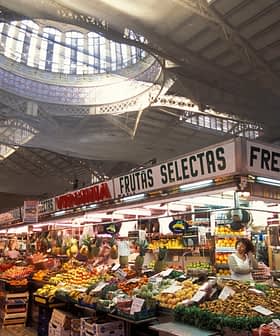 Global olive oil production for 2012/13 is forecast to total about 2.75 million tons, down by about a fifth on last year’s all-time high of nearly 3.39 million tons, the International Olive Council reports in its September market newsletter.
Global olive oil production for 2012/13 is forecast to total about 2.75 million tons, down by about a fifth on last year’s all-time high of nearly 3.39 million tons, the International Olive Council reports in its September market newsletter.
But while leading producer Spain is the country where output will fall the most — due to harsh frosts over winter then a severe summer drought — a season-on-season increase of 18.6 percent is likely in Greece.
And Tunisia — which exports 70 percent of its olive oil — is also expecting an excellent harvest, to the tune of 220,000 tons, the IOC said.
World olive oil market
Imports into China and Japan are still growing strongly and up 31 and 18 percent respectively, the latest trade figures show.
While import growth for the United States is more modest at 7 percent, it took 33,322 tons of olive oil in July alone — its highest monthly total this season — making China’s 5068 tons that month look small.
The data for the first ten months of the 2011/12 crop year (October to July) also show exports are up 9 percent each into Russia and Brazil but down 7 percent in Canada and 2 percent in Australia.
Remarking on a 5 percent rise in imports into the European Union, the IOC said that growth “seems surprising at first glance, given the exceptionally high level of EU production in 2011/12, but it can perhaps be explained by the expectations of a poor harvest in 2012/13 because imports started to rise in May 2012.”
Table olives
Table olive production for 2012/13 is expected to be down 7 percent globally on the previous season, but Greece and Turkey are expecting increased output.
If Turkey achieves forecast production of 410,000 tons this harvest it will pass Egypt (300,000 tons) to be second after Spain in terms of the world’s biggest producers.
The figures to July show that table olive imports are up 7 percent into Brazil and 1 percent in Australia and down 7 percent in Russia and 4 percent in the US.
Producer prices
Producer prices for extra virgin olive oil started to rise sharply in Spain in late June, climbing 39 percent to average €2.59/kg by late September. The IOC said the most plausible explanation was that this was caused by expectations of a smaller harvest there.
“But it must also be remembered that prices have been very low in Spain through the last two crop years and that this increase brings them up to the level of March 2008” it said.
At €2.90/kg, the EVOO average price in Italy is 9 percent down on the same time last season but is nevertheless up relative to its €2.38/kg at the start of this August.
The gap between the price of refined olive oil and extra virgin olive oil is currently about €0.43/kg in Spain and €0.42/kg in Italy.
“The (EVOO) prices available for Greece in late September are at the same level as the previous crop year (€2.04/kg), but here again prices have risen in the last two months, going up from €1.86/kg in late July – early September to reach the figure of €2.04/kg in late September 2012” the IOC said.








